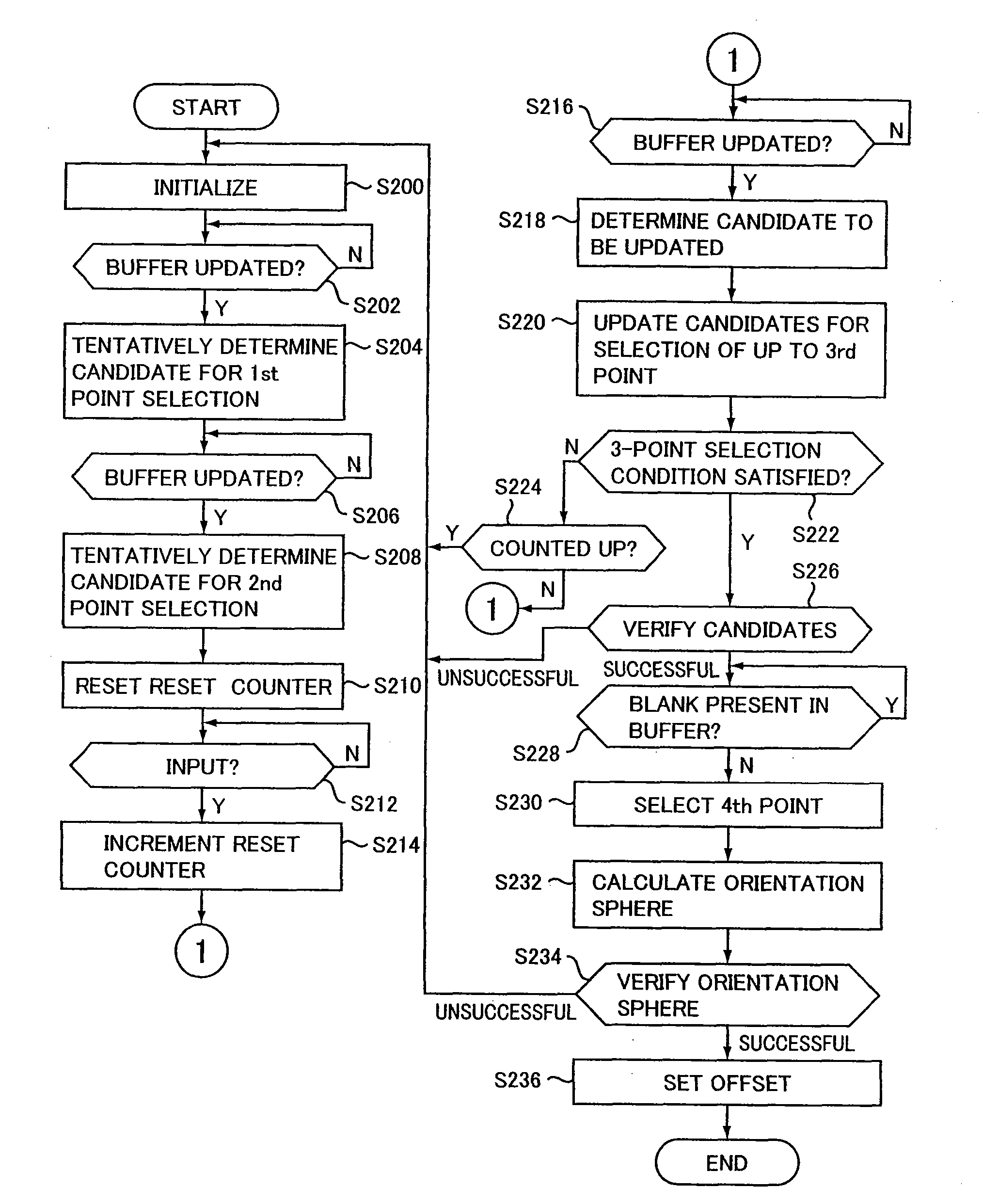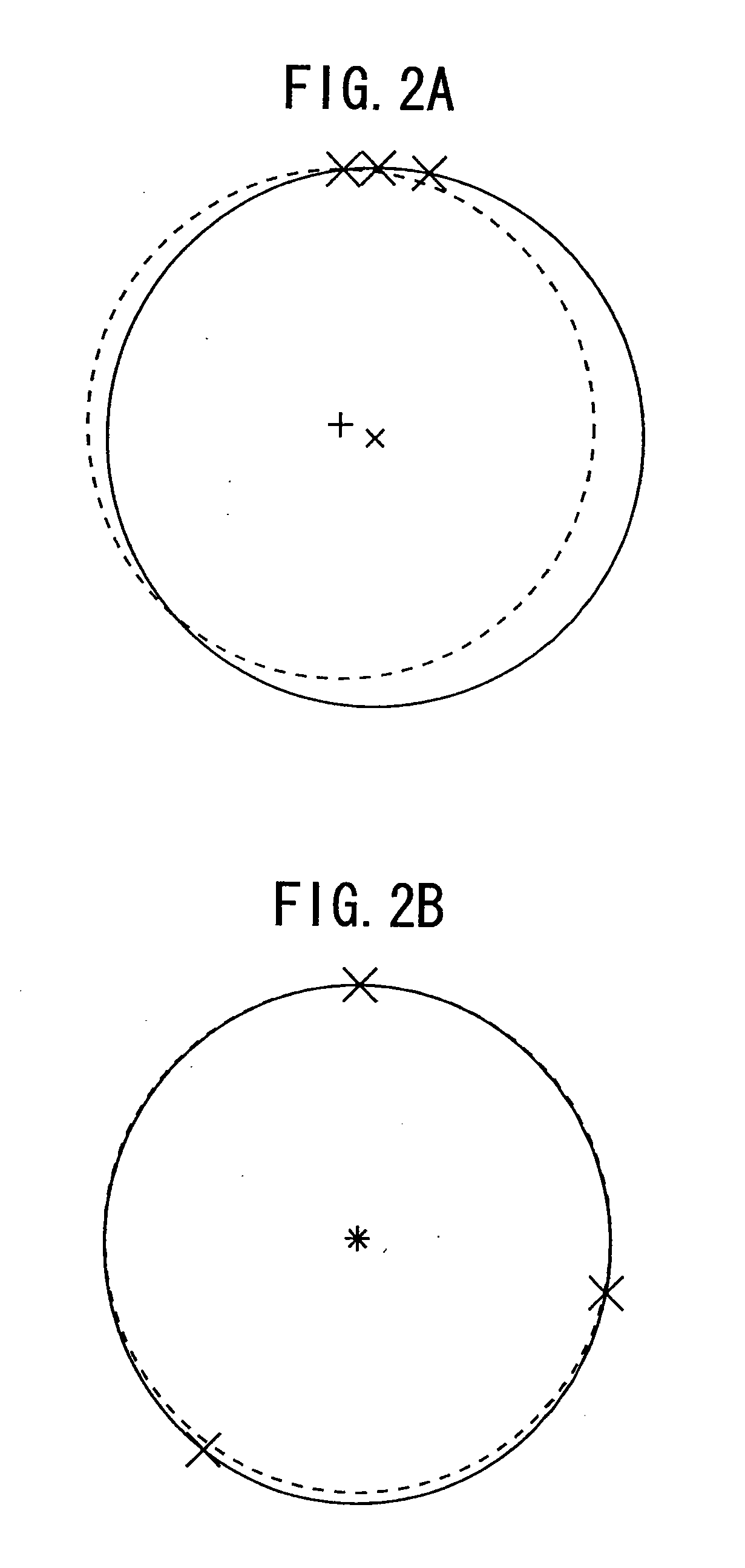Magnetic sensor control device
a control device and magnetic sensor technology, applied in the direction of instruments, liquid/fluent solid measurement, recording signal processing, etc., can solve the problems of inability to calculate highly accurate offsets, calculation errors, and point corresponding to magnetic data not form a perfect sphere, etc., to achieve efficient offset calculation
- Summary
- Abstract
- Description
- Claims
- Application Information
AI Technical Summary
Benefits of technology
Problems solved by technology
Method used
Image
Examples
first embodiment
[0092] A. First Embodiment
[0093] [1. Overview]
[0094] 1-1. Basic Principle
[0095] 1-2. Hardware Structure
[0096] 1-3. Software Structure
[0097] [2. Procedure]
[0098] 2-1. Buffer Update
[0099] 2-2. Tentative Determination of Candidate for Selection of 1st Point
[0100] 2-3. Tentative Determination of Candidate for Selection of 2nd Point
[0101] 2-4. Selection of up to 3rd Point [0102] 3-Point Update [0103] 3-Point Selection Condition [0104] Selection Verification [0105] 3-Point Reset
[0106] 2-5. 4th Point Selection [0107] Overview [0108] 4-Point Selection Condition [0109] Orientation Sphere Calculation [0110] Orientation Sphere Verification [0111] Offset Setting
second embodiment
[0112] B. Second Embodiment
[0113] [1. Overview]
[0114] 1-1. Basic Principle
[0115] First, a basic principle of the first embodiment is described.
[0116] This embodiment sets an offset to negate magnetization components of a moving body included in an output of a 3D magnetic sensor provided in the moving body. To obtain the offset, this embodiment specifies a spherical surface which approximates a 3D surface by a set of a number of points in a vector space having components corresponding to magnetic data output from the 3D magnetic sensor. This spherical surface will be referred to as a spherical surface of an orientation sphere. The coordinate components specifying the center point of the orientation sphere correspond to the offset, and the radius of the orientation sphere corresponds to the intensity of the magnetic field. Since there is an inherent measurement error in the output of the 3D magnetic sensor, a set of points represented by coordinate components corresponding to the 3 ...
PUM
| Property | Measurement | Unit |
|---|---|---|
| radius | aaaaa | aaaaa |
| magnetic | aaaaa | aaaaa |
| magnetic data | aaaaa | aaaaa |
Abstract
Description
Claims
Application Information
 Login to View More
Login to View More - R&D
- Intellectual Property
- Life Sciences
- Materials
- Tech Scout
- Unparalleled Data Quality
- Higher Quality Content
- 60% Fewer Hallucinations
Browse by: Latest US Patents, China's latest patents, Technical Efficacy Thesaurus, Application Domain, Technology Topic, Popular Technical Reports.
© 2025 PatSnap. All rights reserved.Legal|Privacy policy|Modern Slavery Act Transparency Statement|Sitemap|About US| Contact US: help@patsnap.com



